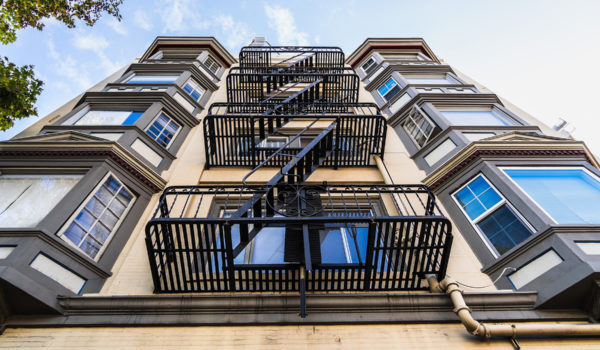Many larger commercial real estate loans, including those financing logistics, distribution, manufacturing, multi-family, retail and office properties, are structured as non-recourse debt. Unlike a traditional recourse loan, where the borrower and one or more guarantors are personally liable for all or part of the loan, a non-recourse lender is generally limited in the case of a default to recovering the property that was granted as collateral. While the borrower loses the property, the borrower and guarantors are not personally liable for any deficiency between the value of the collateral and the amount owed on the loan. This is a tremendous benefit to borrowers and guarantors in a down economy. However, there are numerous exceptions to this general rule of non-recourse. The non-recourse loan documents include “carveouts” where, under certain circumstances, the borrower and guarantors signing a carveout (or “bad boy”) guaranty will be personally liable for up to 100% of the loan.
Because of the mandatory business closures and other disruptions in the financial markets, many of our clients who own CRE are being faced with tenants with significant short-term (and maybe long-term) financial issues. These same clients – the landlords – may also have their own personal financial challenges now or in the near future. Unfortunately, many of the obvious “next steps” for these CRE clients are traps under non-recourse loan carveouts. Taking these actions unnecessarily expose CRE clients to significant, unexpected personal liability. In a chaotic time, this is one area where the non-recourse borrower can’t become distracted.
Requests from Tenants for a Rent Deferral or other Rent Relief
Non-recourse loan documents (and recourse loan documents for that matter) limit the ability of the borrower to amend leases. An amendment can be as simple as an e-mail agreeing to temporarily change the rent payment terms, such as deferring, reducing or waiving a month’s rent. Most non-recourse loan documents expressly state that a “Transfer” does not include leases/lease amendments if entered into in accordance with the loan documents. That means any lease amendment that is not entered into in accordance with the leasing provision in the loan documents (e.g., without lender consent) is a Transfer. A Transfer is almost always a full recourse carveout under non-recourse loan documents. A full recourse carveout means that the remedy to the lender isn’t just the recovery of the amount of rent that was deferred, waived or reduced; the remedy is that the borrower and non-recourse carveout guarantors are now liable for 100% of the entire amount of the loan.
Admitting in Writing the Inability to Pay Debts as They Become Due
Many CRE landlords have been told over the years that the best practice when they face financial problems is to keep their lender apprised of what’s going on and to seek an acceptable loan modification. This can be good advice. However, any communication with the lender needs to be carefully considered. Nearly all non-recourse carveouts contain a full recourse carveout for “admitting in writing the inability of the Borrower to pay its debts as they become due.” Something as seemingly innocuous as an e-mail to your lender asking to skip a payment, because you don’t have the necessary cashflow, can result in the borrower and non-recourse carveout guarantors now being liable for 100% of the entire loan amount.
Failure to Pay Certain Bills and Unpermitted Use of Rent Proceeds
There are many other situations that can trigger liability under non-recourse carveouts. Some common situations are failure to properly maintain and repair the property, failure to pay taxes and assessments, permitting mechanic’s liens to be filed, not satisfying landlord obligations under leases, diverting rent (including distributions to partners) or misapplying insurance proceeds. When a landlord is facing its own financial problems, there is pressure to not undertake certain work, not pay certain bills and to use cash from whatever source to pay the most pressing portfolio obligations. To avoid converting a non-recourse loan into recourse liability, landlords need to pay close attention to the work and bills associated with non-recourse loan collateral and the use of funds generated from this collateral.
Have Non-Recourse Carveouts and Lender Correspondence Reviewed
Given the less than obvious scenarios where non-recourse carveouts can be triggered, the significant consequences when triggered, and the history of courts enforcing these technical defaults under carveout provisions in often unexpected ways (search “Cherryland Mall Decision” for a famous example), we encourage you to have your carveout provisions reviewed now. Once you identify and understand these requirements, strict compliance needs to be a disciplined priority.
For more information please contact Barry Hines or Brian Dunham or any attorney in Frost Brown Todd’s CMBS Lending & Servicing Transactions practice group.

